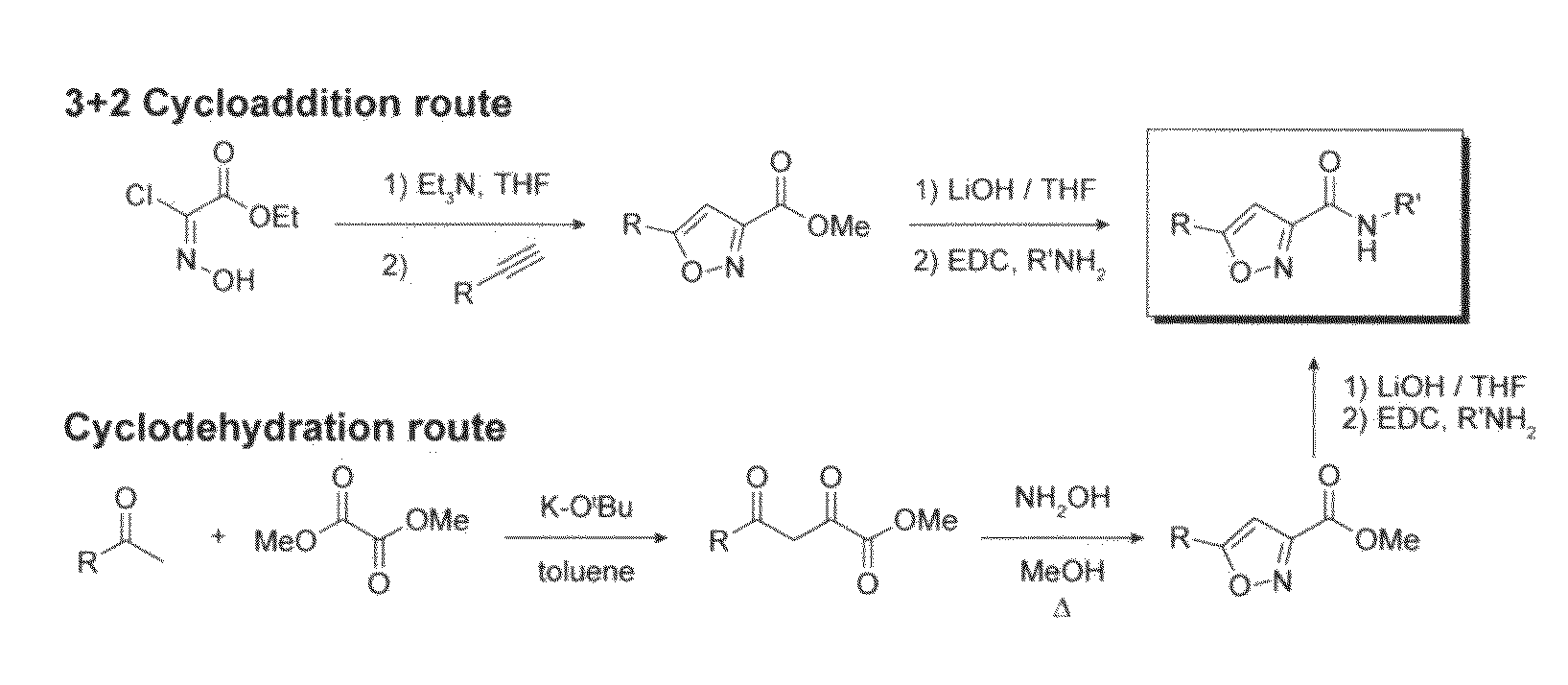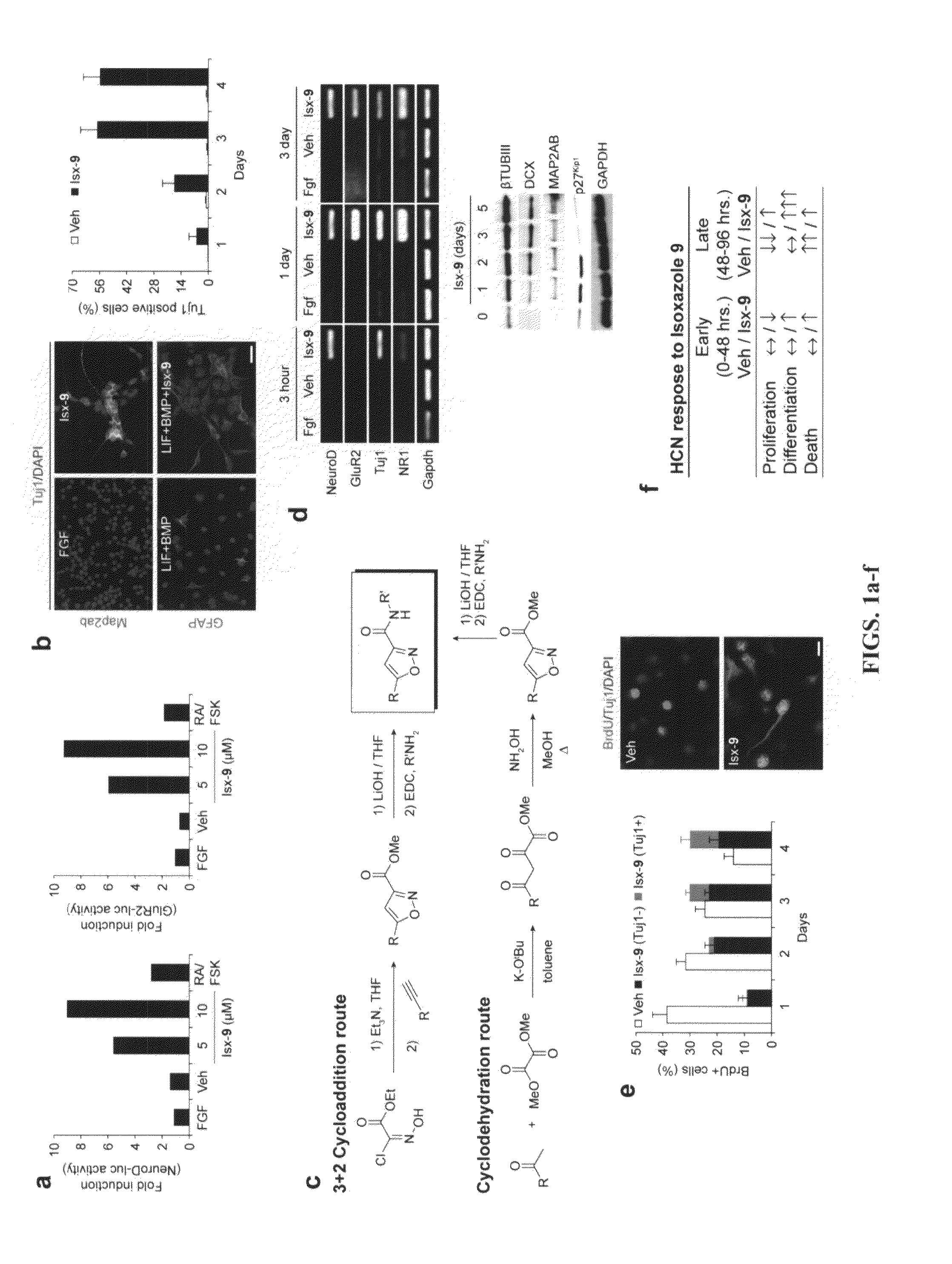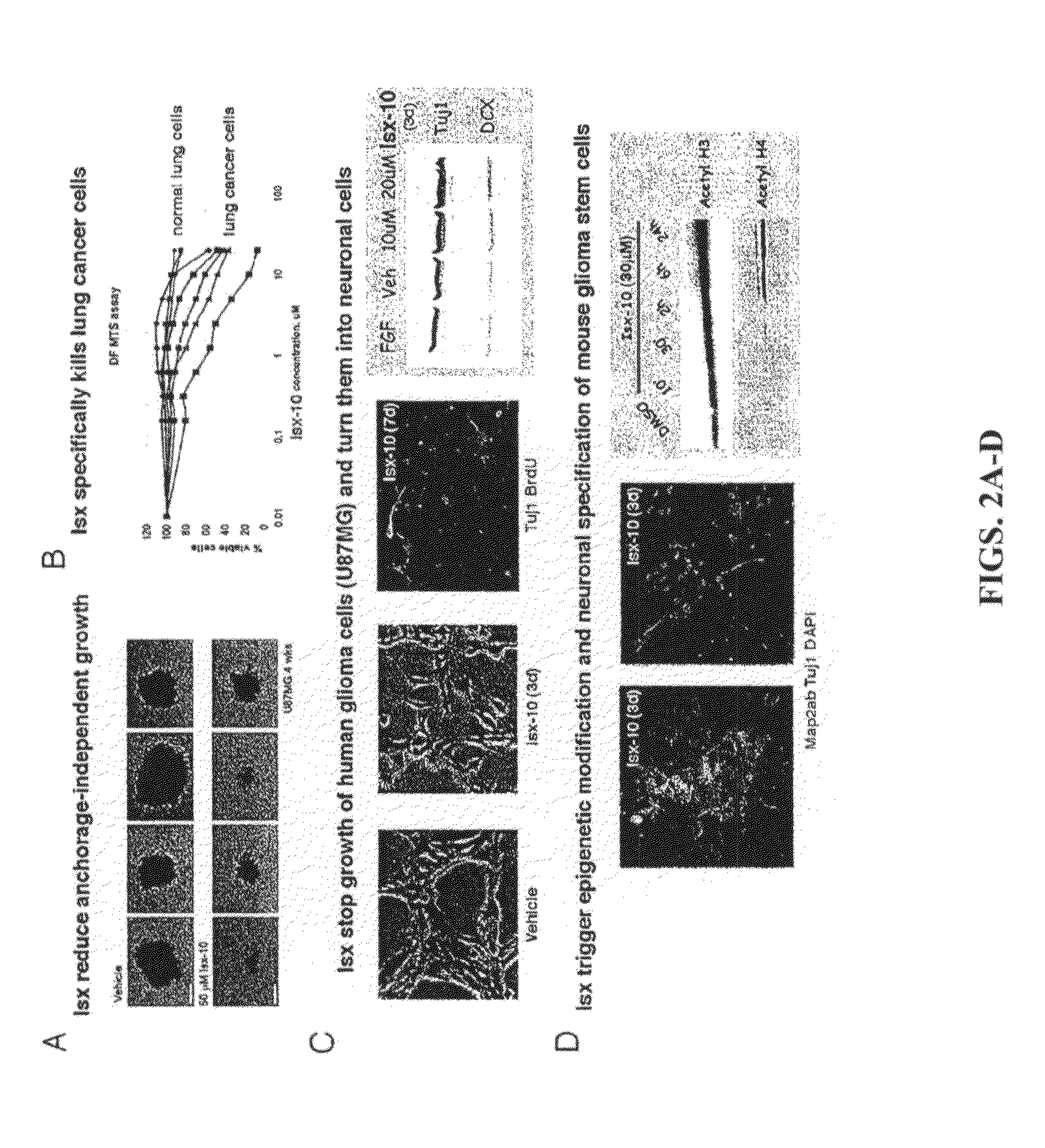Chemical inducers of neurogenesis
a technology of neurogenesis and chemical inducers, applied in the field of cell biology, developmental biology and neurobiology, can solve problems such as cancer formation, and achieve the effect of promoting or enhancing the well-being of subjects
- Summary
- Abstract
- Description
- Claims
- Application Information
AI Technical Summary
Benefits of technology
Problems solved by technology
Method used
Image
Examples
example 1
Identification of Certain Neurogenic-Inducing Compounds of the Present Invention
[0210]Chemical libraries and medicinal chemistry. The UTSW compound library used in this screen was purchased in two components: 47,000 unique compounds selected from the DiverSet™ small-molecules library (ChemBridge, Inc; San Diego, Calif.) and 100,000 unique compounds from Chemical Diversity Labs, Inc. (San Diego, Calif.). This collection of compounds was additionally filtered to exclude compounds containing reactive groups and compounds likely to be insoluble or cytotoxic.
[0211]Assay development. An Nkx2.5-luc transgene was constructed by replacing the two coding sequence exons of NRx2.5 locus from the ATG with the coding sequence of luc (from pGL3-basic vector, Promega) in an ˜180,000 base pair-long BAC (FIG. 11). The recombinant BAC DNA was introduced into pluripotent P19CL6 cells using Lipofectamine-2000 (Invitrogen) and neoR clones were selected, and tested for chemically inducible luc activity wi...
example 2
Synthesis of Certain Compounds of the Present Invention
[0215]Synthesis of 3,5-disubstituted isoxazoles. Two approaches based on known literature procedures (Jager and Colinas, 2003; Grunanger and Vita-Finzi, 1991; Cicchi et al., 2003) were used to synthesize certain compounds of the present invention.
[0216]General procedure A: 3+2 cycloaddition route to isoxazole core. To a stirred suspension of ethyl chlorooximido acetate (3.0 mmol) and the corresponding alkyne (1.0 mmol) in THF (5 mL) was added triethylamine (4 mmol) dropwise at room temperature. The reaction was monitored by LC / MS analysis for conversion to the isoxazole. After 24 hrs, the reaction was diluted with water (2 mL) and ethyl acetate (2 mL). The organic layer was washed with brine (2 mL) and dried over Na2SO4. Concentration gave an oil that was purified by silica gel chromatography to yield the corresponding ethyl 5-(aryl)isoxazole-3-carboxylate (30-50% yield).
[0217]General procedure B: cyclodehydration route to isoxa...
example 3
Synthesis of Particular Compounds of the Present Invention
N-cyclopropyl-5-(thiophen-2-yl)isoxazole-3-carboxamide
[0220]
[0221]To a solution of ethyl 5-(thiophen-2-yl)isoxazole-3-carboxylate (220 mg, 1 mmol) in absolute ethanol (5 mL) was added cyclopropylamine (285 mg, 5 mmol). The reaction was sealed and heated to 80° C. for 24 hours. The reaction was allowed to cool to room temperature and water (1 mL) was added. The product was collected by vacuum filtration as a white crystalline solid (150 mg, 64% yield). δH (400 MHz, d6 DMSO): 8.85 (1H, d), 7.83 (1H, d), 7.76 (1H, d), 7.24 (1H, d), 7.18 (1H, s), 2.83 (1H, m), 0.58-0.71 (4H, m).
Synthesis of Certain Isoxazoles and Pyrazoles of the Present Invention
[0222]Generally: The synthesis of certain isoxazoles and pyrazoles starts with the reaction of an aromatic ketone (i.e., acetophenone) with an appropriate base (i.e., potassium tertbutoxide) to generate the corresponding enolate in a suitable solvent such as tetrahydrofuran. This enolate...
PUM
| Property | Measurement | Unit |
|---|---|---|
| time | aaaaa | aaaaa |
| time | aaaaa | aaaaa |
| time | aaaaa | aaaaa |
Abstract
Description
Claims
Application Information
 Login to View More
Login to View More - R&D
- Intellectual Property
- Life Sciences
- Materials
- Tech Scout
- Unparalleled Data Quality
- Higher Quality Content
- 60% Fewer Hallucinations
Browse by: Latest US Patents, China's latest patents, Technical Efficacy Thesaurus, Application Domain, Technology Topic, Popular Technical Reports.
© 2025 PatSnap. All rights reserved.Legal|Privacy policy|Modern Slavery Act Transparency Statement|Sitemap|About US| Contact US: help@patsnap.com



